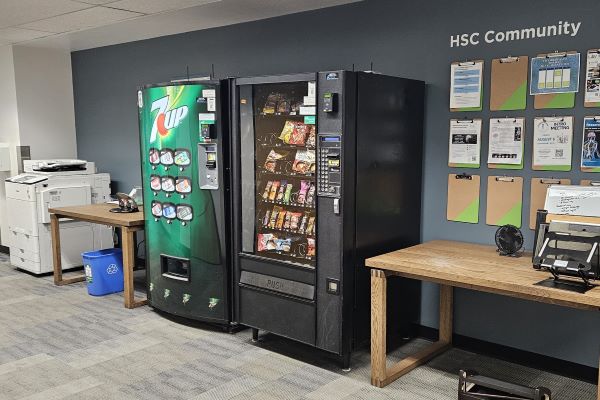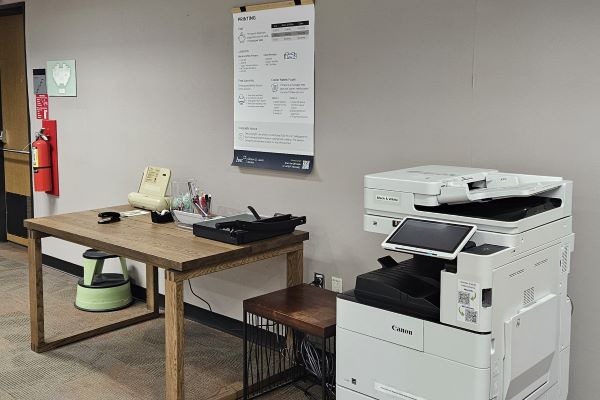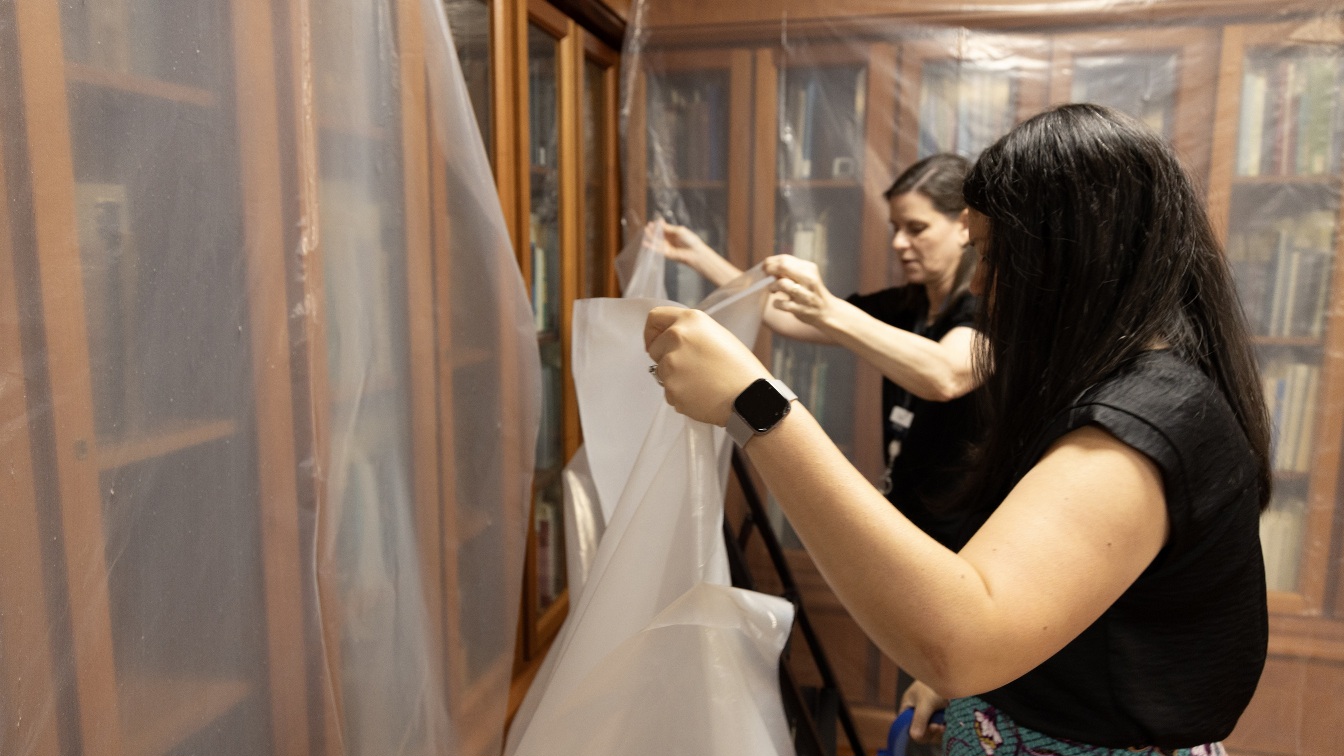We are excited at Lewis Library to begin the renovation project, but did you know library staff have some work to do too?
Making room
Beginning Monday, August 5, construction begins on the 1st Floor Lower Lobby of Lewis Library. This space, located next to the Simulation Center, provides a small kitchenette area and vending machines for students, faculty and staff. In preparation for the first phase of the renovation, two vending machines have moved to the 2nd Floor, inside Lewis Library, next to the color printer.
To make room for for the vending machines on the 2nd Floor, the Black & White (B&W) printer has been moved to the 3rd Floor, near rooms 306 & 308. For more information about printers across campus, visit Print, Copy & Scan.


Plastic Wrap an Archive?!
Additionally, Lewis Library staff must ensure that the University Archives is properly protected during the renovation process. The University Archives houses over 350 linear feet of materials including photographs, film, negatives, manuscripts, artifacts, and slides. It also contains 2,500+ volumes in the Rare and Historical Books Collection and displays exhibits featuring archival materials in the Rare Book Room Gallery (LIB 312). The University Archives is available for faculty, students, and the public to utilize for their research and study. The materials housed in the University Archives and Rare Book Room are irreplaceable and historically important so it’s up to Lewis Library staff and the University Archivist to ensure that the materials remain safe and accessible.

So why are we wrapping them in plastic?
The short answer is, to protect them from dust and construction debris. During construction plaster dust, sawdust, and other particulates get distributed by the building’s air-handling systems, normal movement, and air flow. These particulates, if they interact with archival materials, can physically abrade and damage the paper and bindings. In addition to particulates, fumes produced during a construction project, from plumbing, electrical, painting, and so on, can react with moisture in books and paper to produce acids or other detrimental chemical. Creating a plastic barrier will help to seal out any damaging elements produced during the construction project, protecting the archival materials and rare books.
While the University Archives and Rare Book Collection will be available for researchers to use during the construction process be aware that it may take staff longer to answer research questions or pull materials due to the “plastic wrap.”
You can contact the University Archivist with any questions at libraryarchives@unthsc.edu.
For all project updates and a list of alternative study spaces, visit 2024/2025 Renovations.
